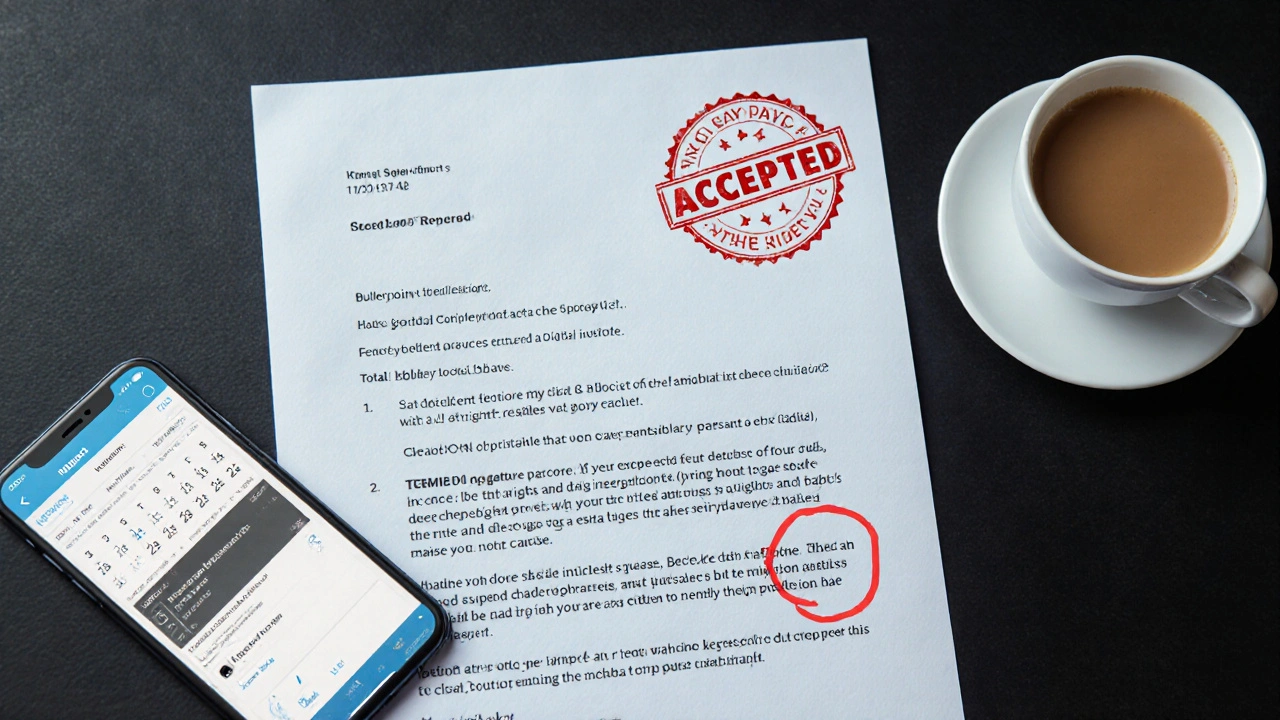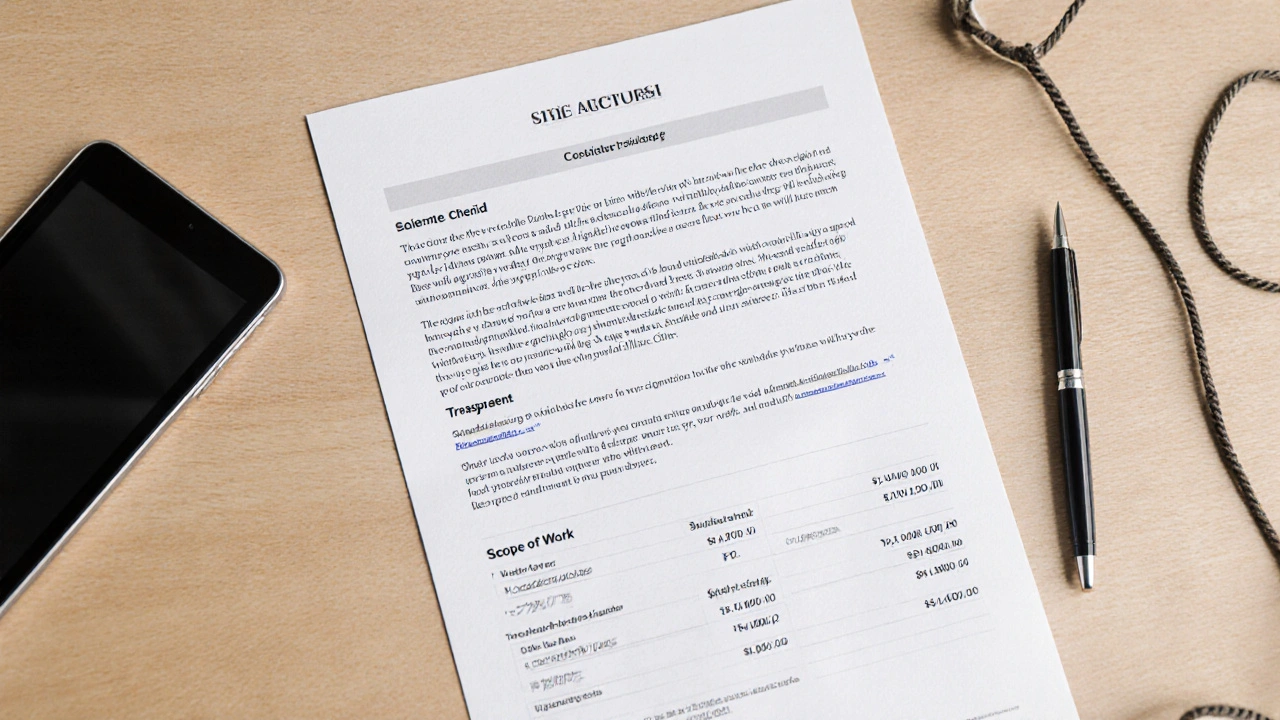Proposal Templates for UK Sales Teams: Structure, Pricing, and Legal Terms
16 Nov, 2025Getting a sales proposal right in the UK isn’t about fancy design or long paragraphs. It’s about clarity, trust, and getting the client to say yes without needing five follow-up emails. Too many sales teams waste weeks rewriting proposals from scratch, only to lose deals because the pricing was unclear, the legal terms were buried, or the structure felt like a generic template they copied from 2018.
The best proposals don’t try to impress. They make it stupidly easy for the buyer to say yes. And in the UK, where business culture values professionalism over flash, that means sticking to a clean, reliable format that covers the essentials-structure, pricing, and legal terms-without fluff.
Why UK Clients Care More About Structure Than Design
UK buyers aren’t looking for animated PDFs or branded PowerPoint decks. They want to know three things fast: What are you selling? How much does it cost? And what happens if something goes wrong?
A strong proposal structure answers those questions in order, without making the reader hunt. Start with a one-paragraph summary that says exactly what the client gets. No jargon. No buzzwords. Just: “You’ll get X service, delivered by Y team, completed by Z date, for £A.”
Then break it into three clear sections:
- Scope of Work - List deliverables in bullet points. Be specific. Instead of “marketing support,” write “Monthly social media content (4 posts/week), ad campaign setup, performance report every Friday.”
- Pricing - Show the total, break down costs, and explain what’s included. No hidden fees. No “starting at” pricing.
- Terms & Conditions - Keep it short. Focus on payment timelines, cancellation rules, and liability limits.
End with a single call to action: “Sign and return by [date] to lock in this offer.” No “Let’s schedule a call.” That’s for the next step.
Pricing: Transparency Wins in the UK Market
UK clients have seen too many sales teams hide costs in fine print. They’ve been burned by “all-inclusive” packages that suddenly charge extra for support, training, or revisions.
Your pricing section needs to be bulletproof. Here’s what works:
- Always show the total amount upfront.
- Break down costs by line item - even if it’s just “Service Fee: £2,500 | Admin: £250 | VAT: £550.”
- State whether prices are inclusive of VAT. In the UK, that’s not optional. If you’re VAT-registered, you must show it. If you’re not, say so clearly.
- Include payment terms: “50% upfront, 50% on delivery” or “Net 15 days from invoice date.”
- Never use “starting from” or “from £X.” It triggers skepticism.
One UK SaaS company saw a 37% increase in signed deals after switching from a single £999/month price to a breakdown: “£850 platform fee | £120 onboarding | £40 monthly support.” Even though the total was the same, the transparency built trust.
Also, avoid long-term contracts unless you’re offering a clear discount. UK buyers prefer flexibility. If you must lock them in, make the exit clause obvious: “Cancel anytime with 30 days’ notice.”
Legal Terms: Keep It Simple, Not Legalese
Most sales teams treat legal terms like an afterthought. They copy-paste a generic clause from another company’s template and hope for the best. That’s how you end up in disputes over intellectual property, liability, or service failures.
In the UK, you don’t need a 10-page contract. You need five clear points:
- Payment Terms - When payment is due, late fees (if any), and accepted methods.
- Service Scope - What’s included and what’s not. This prevents scope creep.
- Liability Cap - “Our total liability is limited to the amount paid under this agreement.” This protects you from absurd claims.
- Intellectual Property - “Client owns final deliverables. All pre-existing materials remain our property.”
- Termination - “Either party may terminate with 30 days’ written notice.”
Don’t mention arbitration, governing law, or force majeure unless you’re dealing with enterprise clients. For SMEs, those terms just confuse people. If a client asks for more, say: “We can add a standard UK commercial agreement upon request.”
And never use “indemnify,” “hold harmless,” or “mutual obligations.” Those phrases scare off small business owners. Use plain English. “If we mess up, we’ll fix it. If you cancel, you pay for what we’ve done.”

Common Mistakes UK Sales Teams Make
Even experienced teams mess this up. Here are the top five errors we see:
- Using the same template for every client. A proposal for a London startup shouldn’t look like one for a Manchester manufacturing firm. Adjust tone, length, and emphasis.
- Forgetting VAT. If you’re registered, you must charge it. If you’re not, say “VAT not applicable.” Not saying anything looks unprofessional.
- Not including a deadline. “Offer valid until [date]” creates urgency. Without it, clients delay.
- Adding too many options. Three pricing tiers max. More than that overwhelms buyers.
- Signing without a signature line. Print it out? Include a line for name, title, and date. Send digitally? Use an e-sign tool like DocuSign or Adobe Sign. Never send a PDF that says “Sign here” with no place to sign.
What a Winning UK Sales Proposal Looks Like
Here’s a real example from a B2B software provider in Bristol:
Summary: “You’ll get our CRM platform, full onboarding, and 6 months of priority support for £4,200. Setup takes 10 days. No hidden fees.”
Scope:
- Access to CRM platform (unlimited users)
- Custom data import from Excel or Google Sheets
- 2x 90-minute training sessions for your team
- Weekly email support for 6 months
- Monthly performance dashboard
Pricing:
- Platform License: £3,500
- Onboarding: £500
- Support (6 months): £200
- VAT (20%): £840
- Total: £5,040
Terms:
- Payment: 50% upfront, 50% after setup
- Cancellation: 30 days’ notice. No refund on support period.
- Liability: Limited to total amount paid.
- IP: Client owns data. We own the software.
Next Step: “Sign below and return by November 30 to start on December 2.”
They closed 82% of proposals sent with this format. Why? Because the client didn’t have to ask a single question.

Tools to Build This Fast
You don’t need to design this from scratch every time. Use these tools to save time:
- PandaDoc - Drag-and-drop templates with UK VAT auto-calculation.
- QuoteWerks - Integrates with CRM. Good for teams that send 50+ proposals a month.
- Canva - For simple, clean PDFs if you’re not tech-heavy.
- Google Docs + PDF export - Still works. Just make sure you follow the structure above.
Whichever tool you use, lock in your core structure. Change the client name, the price, and the deliverables. Everything else stays the same.
Final Tip: Test, Track, Tweak
Don’t assume your template is perfect. Track your win rate by proposal version. After 20 proposals, ask yourself:
- Which ones got signed? What did they have in common?
- Which ones got ignored? Was the pricing unclear? Was the deadline missing?
- Did any clients ask for changes? Add those as optional sections.
One UK agency doubled their conversion rate after noticing clients kept asking, “Can we pay quarterly?” They added a payment option: “Monthly, Quarterly, or Annual.” The quarterly option became the most popular.
Your template isn’t a one-time fix. It’s a living document. Update it every quarter based on what actually works.
Do UK sales proposals need to include VAT?
Yes, if you’re VAT-registered - which most UK businesses over the £90,000 threshold are. You must show VAT as a separate line item. If you’re not registered, state “VAT not applicable.” Omitting VAT entirely looks unprofessional and can trigger compliance issues.
Should I offer multiple pricing tiers in my proposal?
Three tiers max. More than that overwhelms UK buyers. Stick to Basic, Standard, and Premium - each with clear differences in features and support. The middle option usually performs best. Make sure the value gap between tiers is obvious, not just a price increase.
Can I use a template from the US for UK clients?
Not without changes. US templates often assume longer contracts, no VAT, and aggressive liability clauses. UK clients expect shorter terms, clear exit options, and plain language. Adjust payment terms, remove “binding contract” language, and always include VAT. What works in New York won’t fly in Newcastle.
How long should a UK sales proposal be?
One to two pages max. Most UK buyers skim. If it’s longer than two pages, they’ll skip to the pricing and terms. Focus on clarity, not completeness. Save detailed specs for a separate document or a follow-up call.
What’s the best way to send a proposal in the UK?
PDF via email, with a short note. Don’t send a link to a portal unless the client asks. Attach the file and say: “Here’s your proposal. Sign using the link below or return a signed copy by [date].” Use e-sign tools like DocuSign or Adobe Sign - they’re trusted here. Avoid sending Word files; they look unfinished.
